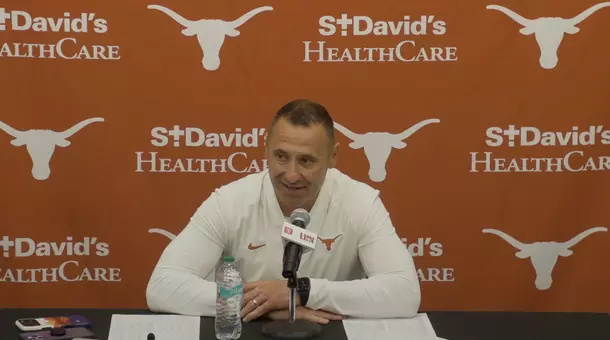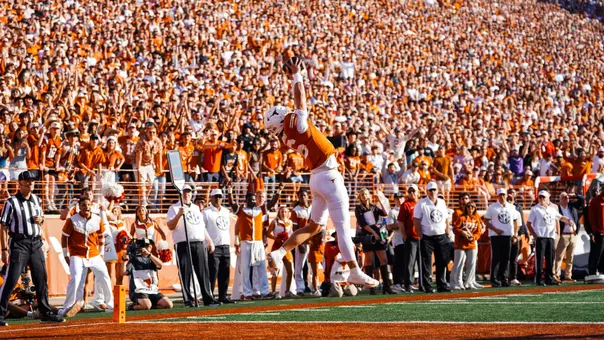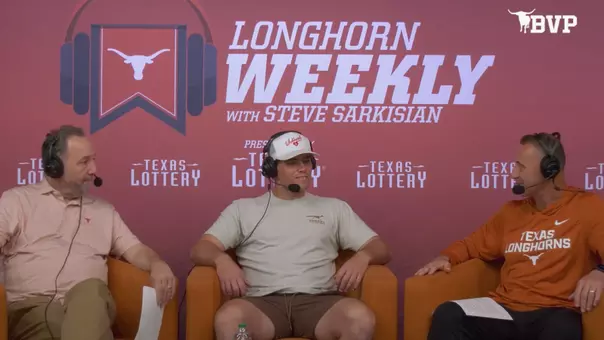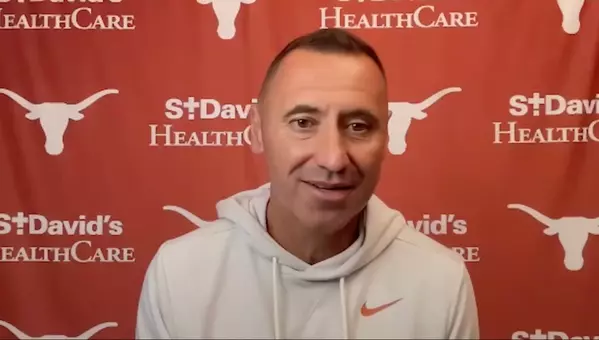The University of Texas at Austin Athletics
Bill Little commentary: November The Twenty-Second
11.22.2013 | Football, Bill Little Commentary
As America remembers and retells its story to those who never saw it or lived it, November 22, 1963, has eerily come to life again, fifty years later.
The structure on the northeast corner of Whitis Avenue and 24th street is now the Geography Building--its shell abuzz with the activity of extensive remodeling. As I stood across the street in front of the Littlefield House, I had hoped that it would be different. In that moment on Thursday, November 21, 2013, I was immersed in nostalgia—suddenly young again, and yet at the same time, very old.
As America remembers and retells its story to those who never saw it or lived it, November 22, 1963, has eerily come to life again, fifty years later. The generations that preceded us could remember the day the stock market crashed, or the bombing of Pearl Harbor. Those that followed can tell you where they were when the Challenger space shuttle exploded, or when they turned on their color television sets and saw the buildings fall in the national tragedy that became 9/ll.
The journalism building—that same structure which is now undergoing that reconstruction—was the home away from home for those of us aspiring to enter the newspaper business in the early years of the decade of the '60s. The epicenter of our existence was the office of The Daily Texan, recognized as the best student newspaper on the planet—at least that is what we thought. When it came to training young journalists, Texas was challenged only by the likes of Missouri and Columbia.
Austin was a city of fewer than 200,000 people, and UT at its best could easily match or beat ten percent of that number. There was actually a Bachelor of Journalism degree available, and those pursuing it began their education with basic courses. The elite of the elite would make it to the staff of The Texan. It's offices were on the first floor of the building at the corner of Whitis and 24th, down the hall to the right as you climbed the granite steps to enter the hallowed halls of learning.
Our instructors and advisors included some of the legends of The University. A battle-seasoned professor named Olin Hinkle taught an editing class, and regularly he would post copies of the day's edition of The Texan—complete with scathing critiques of our work penned by a big red grease pencil.
A college education is many things…was then, and still is today. But the greatest lesson…the greatest gift you can attain…is pride in who you are and what you do. It was with that backdrop and into that world that we walked on that bright morning of November 22, 1963.
The biggest news on campus, of course, was the Longhorn football team. Darrell Royal was in his seventh season as the head football coach at Texas. He was still a young 39 years old, and his team—make that "our" team for the thousands of loyalists on campus—had lost only one regular season football game during the seasons of 1961, 1962 and 1963. Ranked No. 1 in the nation, all the 'Horns had to do was dispose of the lowly Texas Aggies (who had won just two football games all season) to claim UT's first ever college football national championship.
It was an age of innocence. Earlier in the week, the biggest news in the state had been the kidnapping and recovery of Bevo VII, the Texas Longhorn mascot. Legend had it that the Aggies, who were not very good at football, were quite accomplished at the hijinks of heisting mascots. Supposedly they had pilfered the mascot of every school they had played that season—except the Houston Cougar and Mike III, the LSU Bengal Tiger—both perfectly understandable omissions.
But the football game, which would be played on Thanksgiving Day, was still a week away. The student body was looking forward to its upcoming holiday break. In the city itself, there was a stirring of excitement in the fact that on Friday, there were big political "doings" about to happen. President John F. Kennedy was already campaigning for a second term in the White House, and he was making a swing through Texas which included a $100-a-plate dinner at the Austin Municipal Auditorium. His visit was of interest to the students; the dinner was not—few among them could have afforded it.
Besides the football team, the most notable member of our student body was Lynda Bird Johnson, the daughter of Vice President Lyndon Johnson. Politically, the state of Texas was still very much in the camp of the Democrat party, and while much of the state was lukewarm to JFK's perceived liberalism, the young president had carried his New Frontier straight to the hearts of the young. It was, as so many have said, our very own version of Camelot, with John Kennedy playing the king to his fair lady Jackie, who doubled as Guinevere to his Arthur.
Fritz's Restaurant sat at the southeast corner of Manor Road and Interstate 35, and it served the best burgers and fried chicken in town. It was a hangout both early and late for students, and on Friday it was a great place to grab lunch after wrapping up your morning classes. From the booth in the far corner, I remember seeing students rushing over to the bar across the south wall. In the days before "sports bar" style television, a small radio had cackled something of interest. My roommate, Henry, asked "wonder what that's about?"
"Oh," I said, "I bet it is about the President…you know, he's coming to Austin today."
It is our nature as humanoids to seek comfort…to yearn for home…in the darkest times of trouble. And that is how I found myself walking into the Daily Texan offices fifty years ago Friday. In the corner of the journalism lab, UT-ex Walter Cronkite was telling us the news we had all feared—the President was dead. It seems hard to comprehend today, but in the span of seventeen-and-a-half years, our country had witnessed the death of two sitting presidents (Franklin Roosevelt in April, 1945 and Kennedy in November of 1963).
I was sports editor of the Texan, but had been trained in news writing from the time I was a kid in Winters, Texas. Now, as we began to muster our resources, I would accept the responsibility of writing a story on Lyndon Johnson. A year before, I had traveled with the Vice President's press corps and spent a day with him when he had come to Texas and visited Brooke Medical Center in San Antonio for a heart check-up.
On Saturday, November 23, The Daily Texan published one of the few "Extra" editions in its history. We took pride in our effort then, and looking back, it is interesting to realize that we not only were we walking through history, we were chronicling it.
I'm not sure any of us left our apartments during the weekend. The same black and white television sets which had brought us the stunning news now were "going live" for the first time in history. We saw the president's accused killer shot dead in a police station before our eyes. We cried at the little boy's salute to his father, mourned with the riderless horse in the funeral procession to Arlington Cemetery.
Many people today have asked why the football game which was played on schedule six days after the assassination wasn't postponed. It was discussed and considered. But looking back, I would say that by the next Thursday, we were drained of our emotions. We were worn out from grief.
Texas did play, and win in a tight game, the contest with Texas A&M. Coach Royal talked with Nellie Connally, the wife of our wounded governor, and she said he had gotten so excited they had to turn the television off. Royal, whose team had squeezed out a 15-13 victory, allowed that he wished he could have turned it off at times himself.
It is true that there are moments in our lives which we remember forever. We know where we were, remember what was said, sense images that hang like pictures in the hallways of our minds.
In time, our country did move forward. Lyndon Johnson became the first born-and-bred Texan ever to serve in the White House, and history has validated his political career and his massive contributions as our president.
Those things we remember. But each year—and particularly on a significant anniversary such as the fiftieth—we also never forget. We did lose our innocence that day, and America has never been the same. The country may look different, think different, even be different. What is true, however, is that the "torch" that president Kennedy talked of passing from generation to generation is both a charge and a challenge. It is an everlasting standard of a dream started long ago.
And we--each of us--are the keepers of that flame.





